By Tom Mommsen & Risa Smith
With British Columbia phasing out the sale of vehicles with internal combustion engines (ICEV) in the next dozen years and switching to battery electric vehicles (BEVs), it’s interesting to look at solar in the context of ‘fuelling’ an electric vehicle.
On average, a personal car in BC travels ~15,000 km per year. Propelled by an internal combustion engine, the car will burn some 1350 L of gasoline each year, using 9 L/100 km, containing around 12,000 kWh of energy. Plus an allowance of about 20% is needed to get the fuel from the ground into the tank (pumping, cleaning, refining, transport etc.), for a total of 14,400 kWh year. This needs to be compared with the energy demand of a BEV that (a very conservative estimate) uses 18 kWh/100 km, plus another 15% of losses in energy conversions, for an annual total of 3200 kWh/15,000 km.
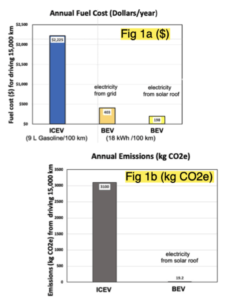 Calculating the cost of the fossil fuel is straightforward, multiplying the 1350 L/y by the average cost at the pump ($1.65/L) will give an expense of $ 2225/y, while the cost of BC grid electricity propelling a comparative BEV amounts to $ 403/y (3200 kWh @ $ 0.126/kWh; blended rate of tiers 1 & 2). This is 80% lower than the gasoline expenses for an ICEV (Fig. 1a): $ 1825 saved every year.
Calculating the cost of the fossil fuel is straightforward, multiplying the 1350 L/y by the average cost at the pump ($1.65/L) will give an expense of $ 2225/y, while the cost of BC grid electricity propelling a comparative BEV amounts to $ 403/y (3200 kWh @ $ 0.126/kWh; blended rate of tiers 1 & 2). This is 80% lower than the gasoline expenses for an ICEV (Fig. 1a): $ 1825 saved every year.
And, let’s face it, it may be a while before BC gasoline prices will reach as low as $ 1.65/L.
What if solar panels were installed to generate those 3200 kWh?
On Galiano, a 3.3 kW solar installation would be required, costing around $ 7500 (average), for 7 to 9 panels (depending on wattage), rails, inverter, cabling and installation. While this seems to be a rather large expense, one has to remember that annual savings of replacing gasoline with solar electrons (6.2 cents/kWh, i.e. about half the cost of grid electricity) amount to $ 2225/y.
In other words, the money for the solar installation would be paid back in 3.7 years, after which all transportation in the BEV would be free. Sounds like a sweet deal, that becomes even sweeter when the impending investment solar income tax credit (30%) is considered, which reduces the amortization period to 2.6 years.
With a life expectancy of 35 years for the solar array, one could drive the EV 32 years for free! You’d basically be pre-paying for less than three years of electrons by purchasing a small solar array and driving a BEV free of charge for the next three decades! No battery is required. The solar electrons will go where they are needed around the house, including an EV charger. If there is no demand in the house, the electrons will flow into the grid – usually ending up at a neighbour’s – with your meter running backwards. As this happens, BC Hydro will credit your account with the electrons (in kWh) delivered into the grid.
When your house/EV needs more electrons than the solar provides, power flow from the grid, running down the previous credit. This movement of electrons/credit is called net-metering and is common all over the world, including BC. The electrons have no monetary value and thus are independent of the normal electricity rate charged by the utility. It also means that these solar electrons are sheltered from any future increases in electricity rates.
While costs are a tangible and a strong incentive to combine solar with an EV, an even starker contrast is apparent when comparing the relative emissions. Emissions from solar add up to about 6 g CO2e per kWh, which amounts to 19.2 kg of CO2e/year for using 3200 kWh/y and driving 15,000 km. The same distance in an ICEV would require 1620 L of gasoline, generating some 3.1 metric tons (3100 kg) of emissions every year (Fig. 1b). Clearly, driving a BEV is not emission-free, but emissions are 0.6% of those from an ICEV. Doing the right thing compensate for the annual emissions from an BEV would require planting a couple of trees, which is quite realistic. In contrast, compensating for 3.1 tonnes of emissions annually will require planting and then caring for about an acre of forest – annually!
For every ICEV on the road. The damage done to the atmosphere by continuing to emit combustion molecules from fossil fuels will be around for centuries.
Despite the misleading propaganda filling the media, both solar arrays and battery electric vehicles are good for the environment and for your pocket book over the long term. The evidence could not be clearer.
(Modified from an article originally published in Galiano’s Active Page – March 2023)

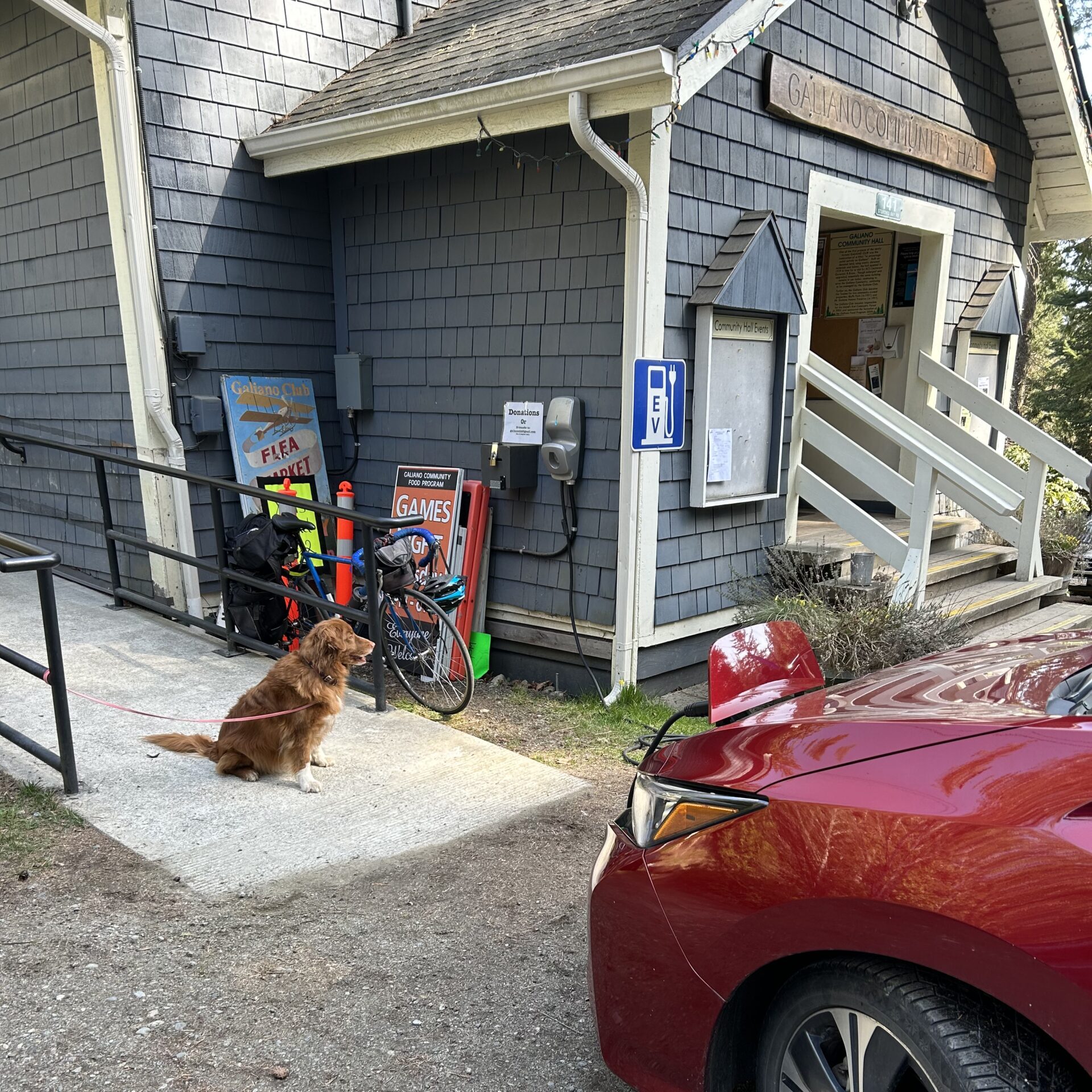
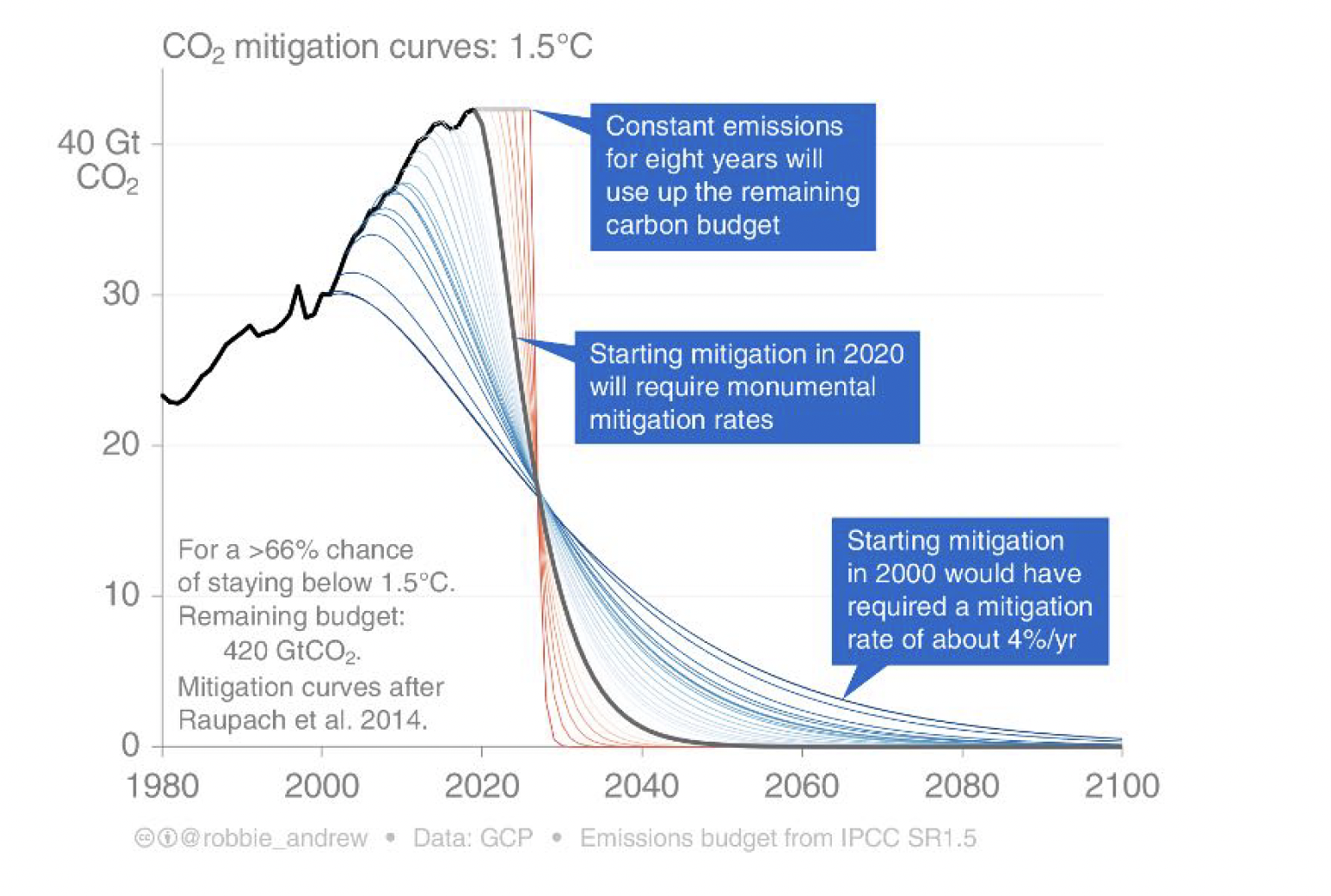
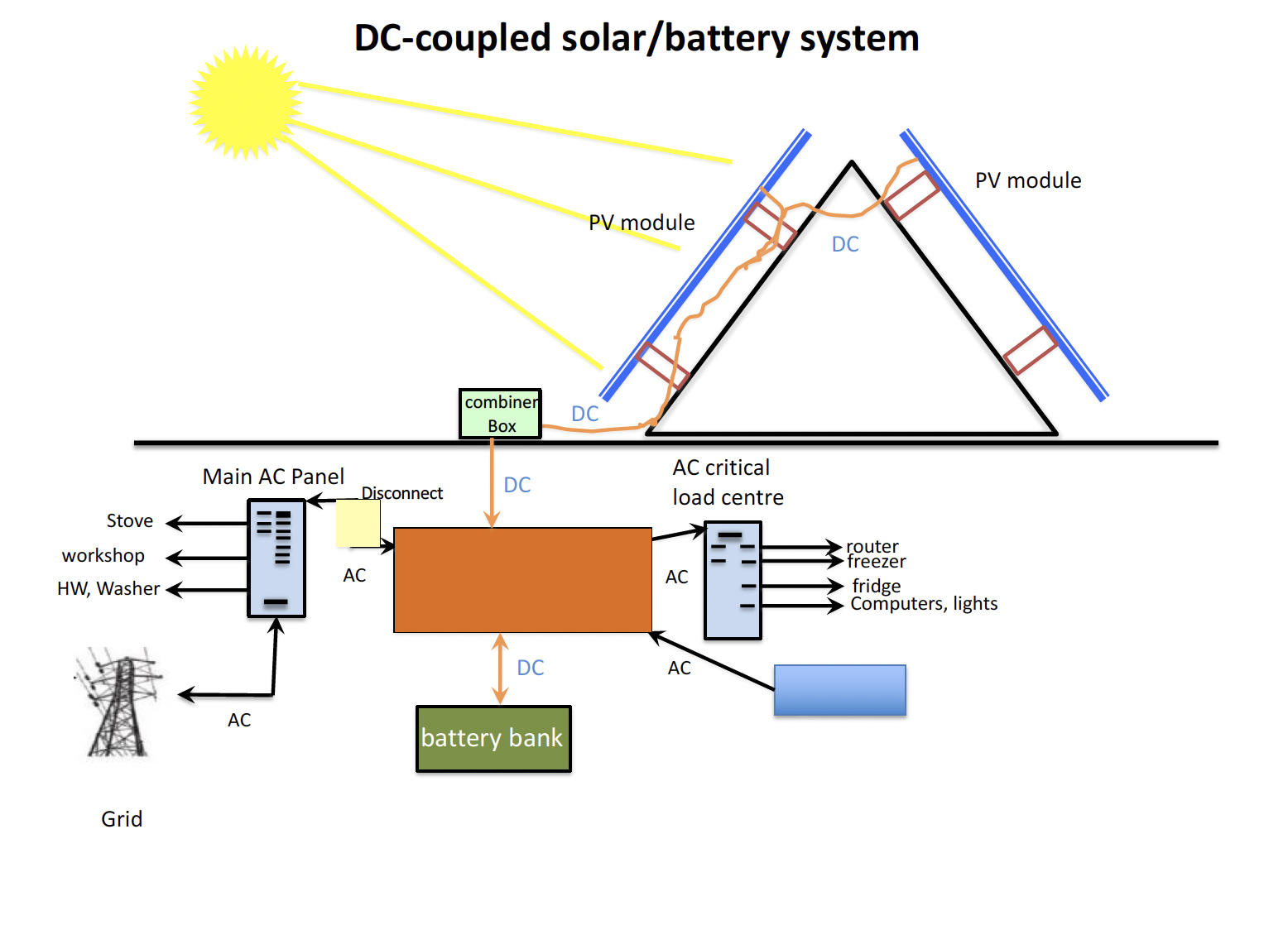
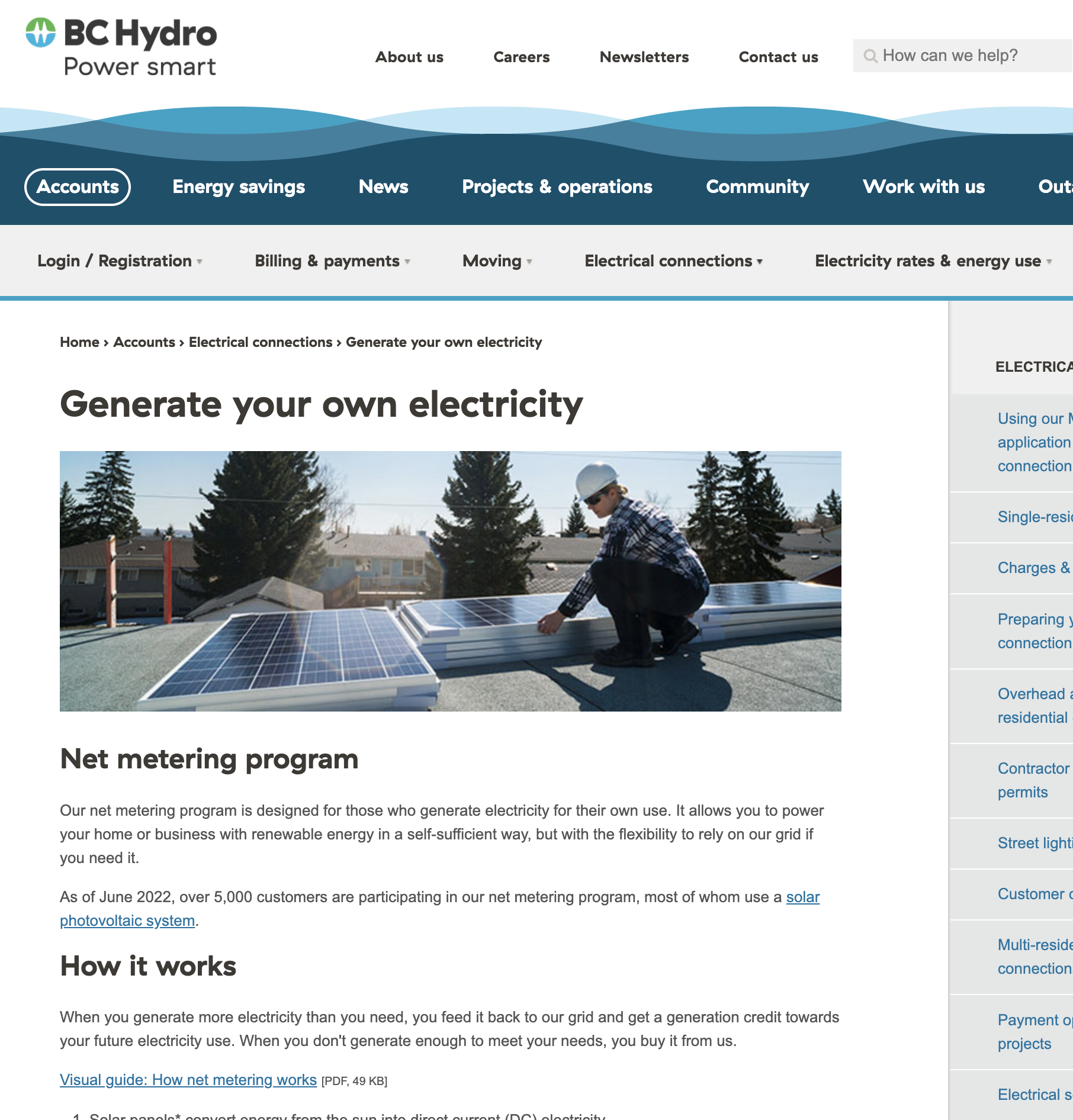

You must be logged in to post a comment.